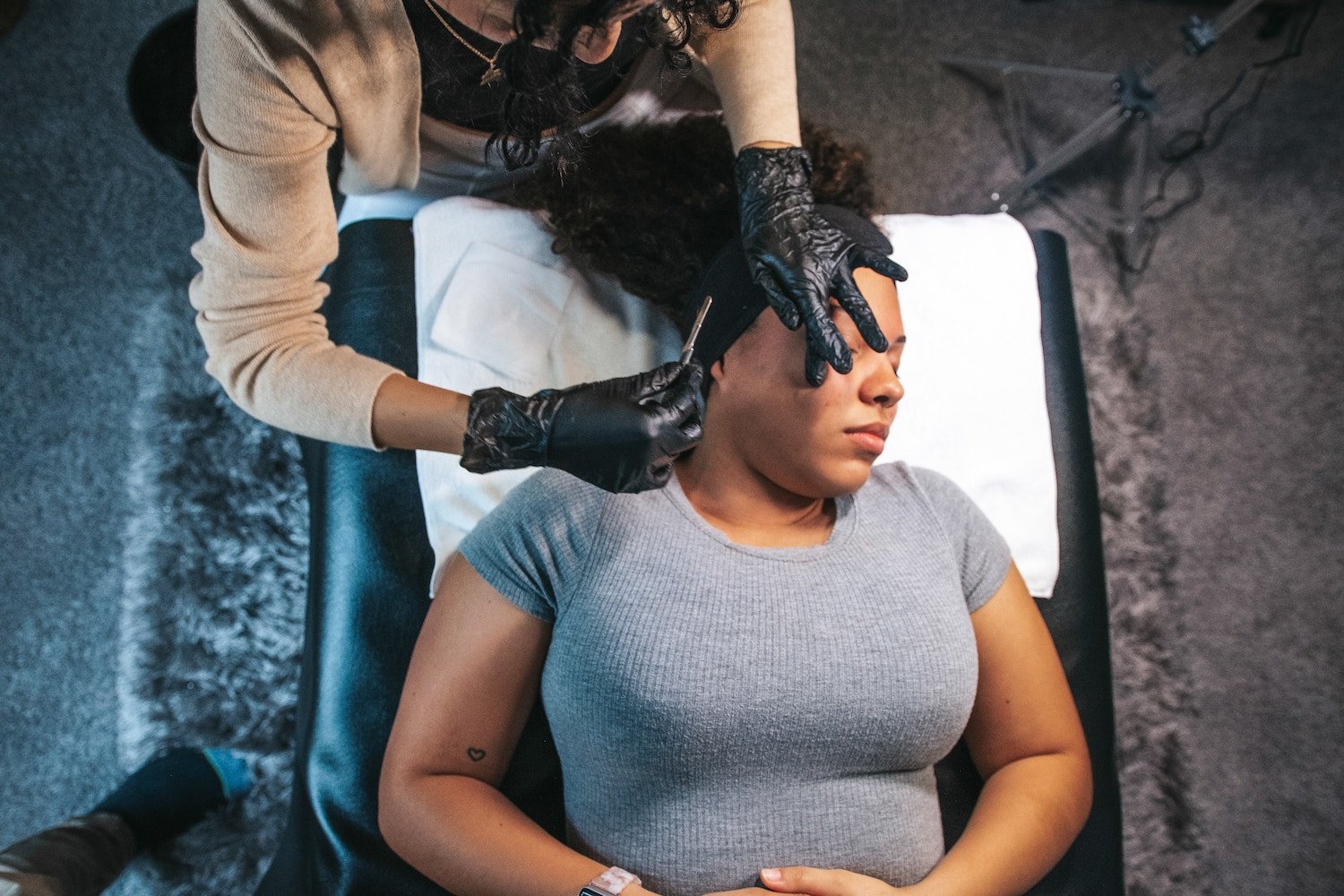Dermaplaning vs Microdermabrasion: Which Exfoliating Treatment to Choose
Resurfacing your skin is a big step in your health and beauty journey. Achieving a smooth face isn’t something that just happens. Sometimes your face needs some help, especially for more significant skin concerns.
Dealing with acne scars and dull skin are, unfortunately, part of many people’s journey toward a healthier complexion. Thankfully, estheticians are poised to help with non-surgical options that rejuvenate your skin!
We’re looking into the differences between two of the most popular exfoliating treatments. Microdermabrasion vs dermaplaning: which is the best choice for you?
How is dermaplaning different from other exfoliating treatments?
Exfoliation treats dull skin by removing the top layer of dead skin cells, dirt, and debris. Normal skin has peach fuzz and cells that pile up if not removed. Usually, skin exfoliation is a daily part of your cleansing routine. You might already have a chemical exfoliation lotion in your bathroom cabinet!
Dermaplaning takes this process to the next level. Instead of using chemicals or rough compounds to exfoliate, your esthetician uses a tool or scalpel called a dermatome. The dermatome is held at a 45-degree angle to shave away dead cells and hair gently. You’ll have a smooth, glowing, hair-free face after the process.
Scarring is treated well with dermaplaning
Acne prone skin is challenging enough to treat with regular facial treatment. Dermaplaning gently removes the top layer of skin. This reduces the appearance of scars and discoloration that deep acne leaves behind.
Peach fuzz removal is most effective from dermaplaning
It’s the dirty little secret of the beauty world: we all have hairy faces! Peach fuzz, or vellus hair, is just part of life, one that dermaplaning can help with. A better choice than waxing, the procedure is an efficient way to provide a smooth surface for makeup application.
Dermaplaning is very inclusive to varying skin types
Normal, dry, and sensitive skin all benefit from dermaplaning. Speak with your esthetician about the process to see if it’s right for you.
What makes microdermabrasion unique?
Exfoliating involves using microscopic particles with a tool that buffs away the tough outer layer of skin. Microdermabrasion is a procedure that removes this outer layer using several different techniques.
Your provider uses a handpiece to exfoliate hardened skin cells and reveal new, healthier skin beneath. Especially useful for fine lines and wrinkles, it’s ideal for all types. Extremely gentle on the skin, one of the benefits of microdermabrasion is little to no recovery time!
What types of microdermabrasion are there?
For the areas around the eyes and mouth, estheticians use a diamond tool to abrade the skin and vacuum away dead cells. Depending on how long the tool’s in place, the depth of cell removal may vary.
Less sensitive areas of the face can handle a crystal microdermabrasion process. A handpiece sprays aluminum oxide or sodium bicarbonate onto the skin. Dead cells are vacuumed away, leaving you with a glowing face!
A new type, hydrodermabrasion, uses a solution that exfoliates and infuses products into the skin. It leaves your face smooth and hydrated.
Microdermabrasion is really good at clearing pores
When your esthetician uses this technique, they remove dead cells and grime that clog your pores. Aside from brightening your complexion, healthier skin is left behind to breathe and shine!
Collagen is produced after a microdermabrasion session
Stimulated by the process, your skin’s natural collagen increases to heal it. Collagen is what makes skin supple and smooth. By encouraging its production, microdermabrasion can bring a youthful look to your face.
Which is better for you, dermaplaning or microdermabrasion?
Now that you understand the procedures and some of the skin concerns they treat, you’ve got to choose. They have pros and cons, but deciding which is best for your skin is important.
Several factors may help you decide which way to go. And don’t forget to consult your esthetician; we’re here to help you!
What type of skincare results are you looking for?
Each of these procedures treats specific concerns. You’ll have a choice to make depending on the results you want. There’s an overlap in the effects: improving pores, reducing wrinkles, and smoothing your complexion. Both also reduce dullness and fine lines, but dermaplaning can have a deeper impact on scarring, and gets rid of vellus hairs.
Which method has longer-lasting results, dermaplaning or microdermabrasion?
After initial treatment, both methods last around three to four weeks. If you find that you love the results, you’ll want to schedule every month or so.
What skin concerns are you looking to address?
Dermaplaning specifically targets scarring and peach fuzz but can also treat hyperpigmentation. It’s ideal for dry or dull skin, sun damage, and rosacea.
Microdermabrasion addresses a long list of concerns. From a dull, dry complexion to blackheads, it manages most of the skin concerns we associate with this type of treatment. If you have an active acne breakout, you won’t be eligible for either treatment.
Whether it is microdermabrasion or dermaplaning, Renewal Skin Studio is here for all your skincare needs!
At Renewal Skin Studio, we focus on giving you the best results we can. With over a decade of experience, you’ll know you’re in safe hands. Deciding which treatment to pursue is challenging, so we ensure you have all the information.
We’re dedicated to helping you be the best version of yourself. Check out our website and book a consultation with us today!

